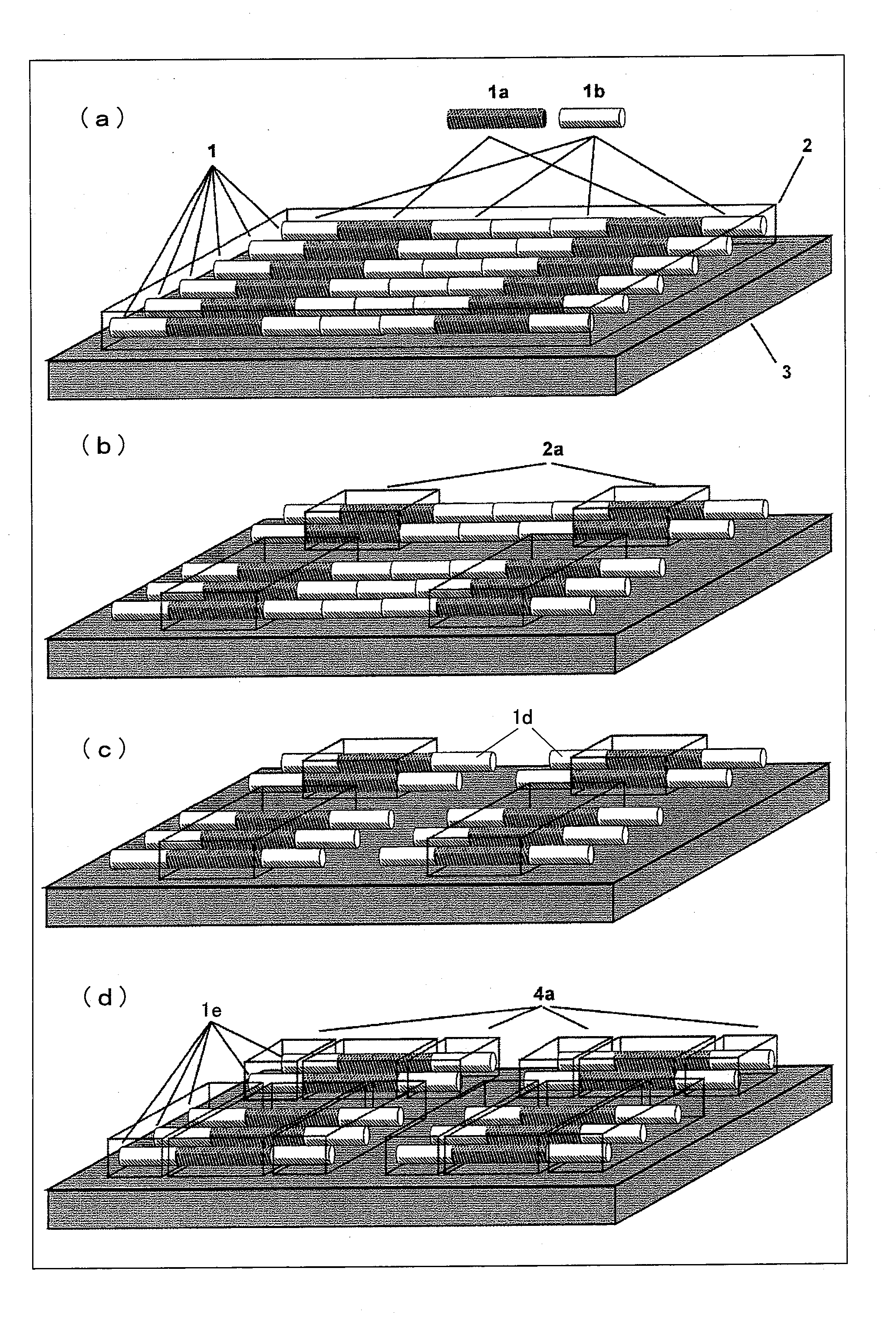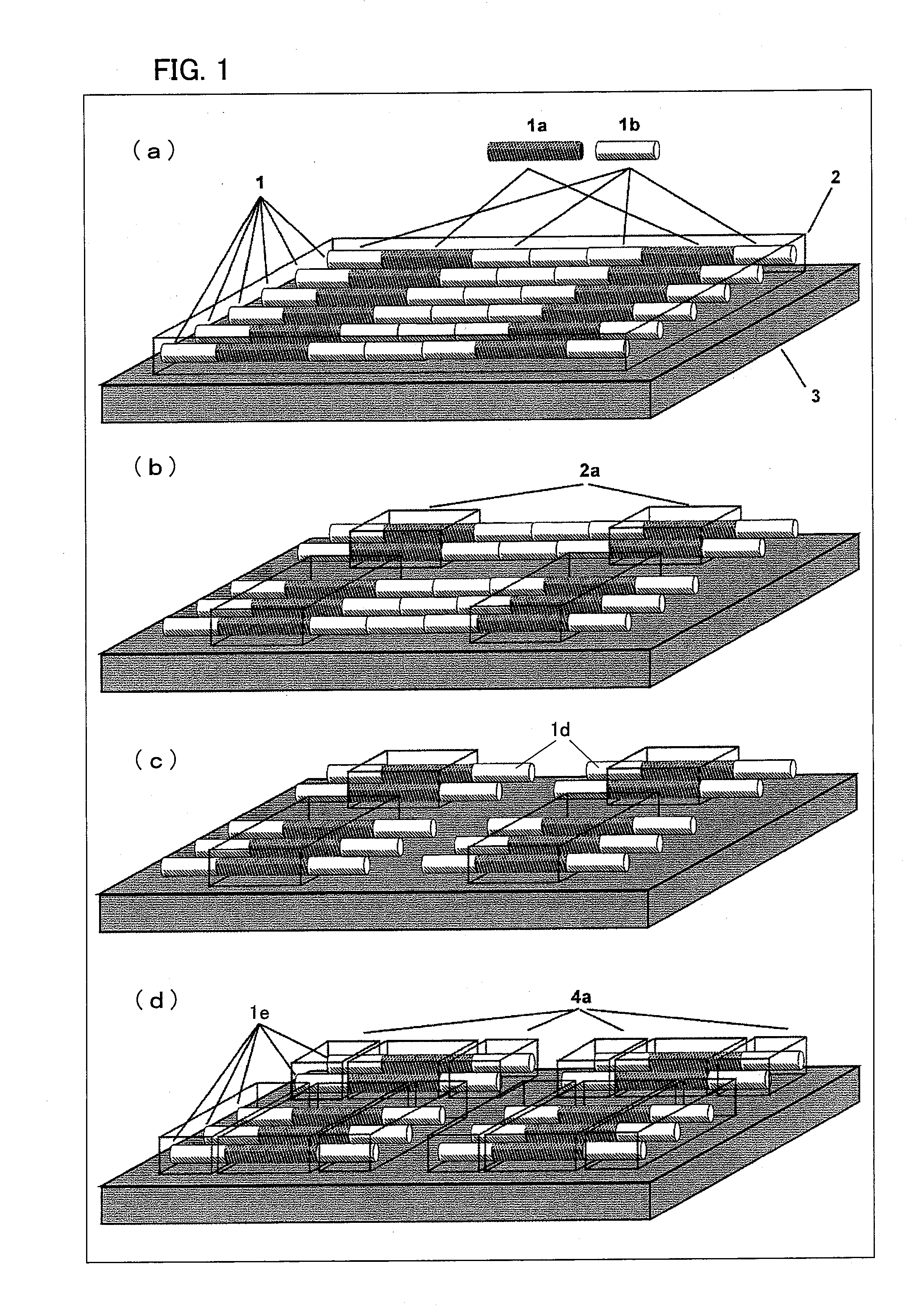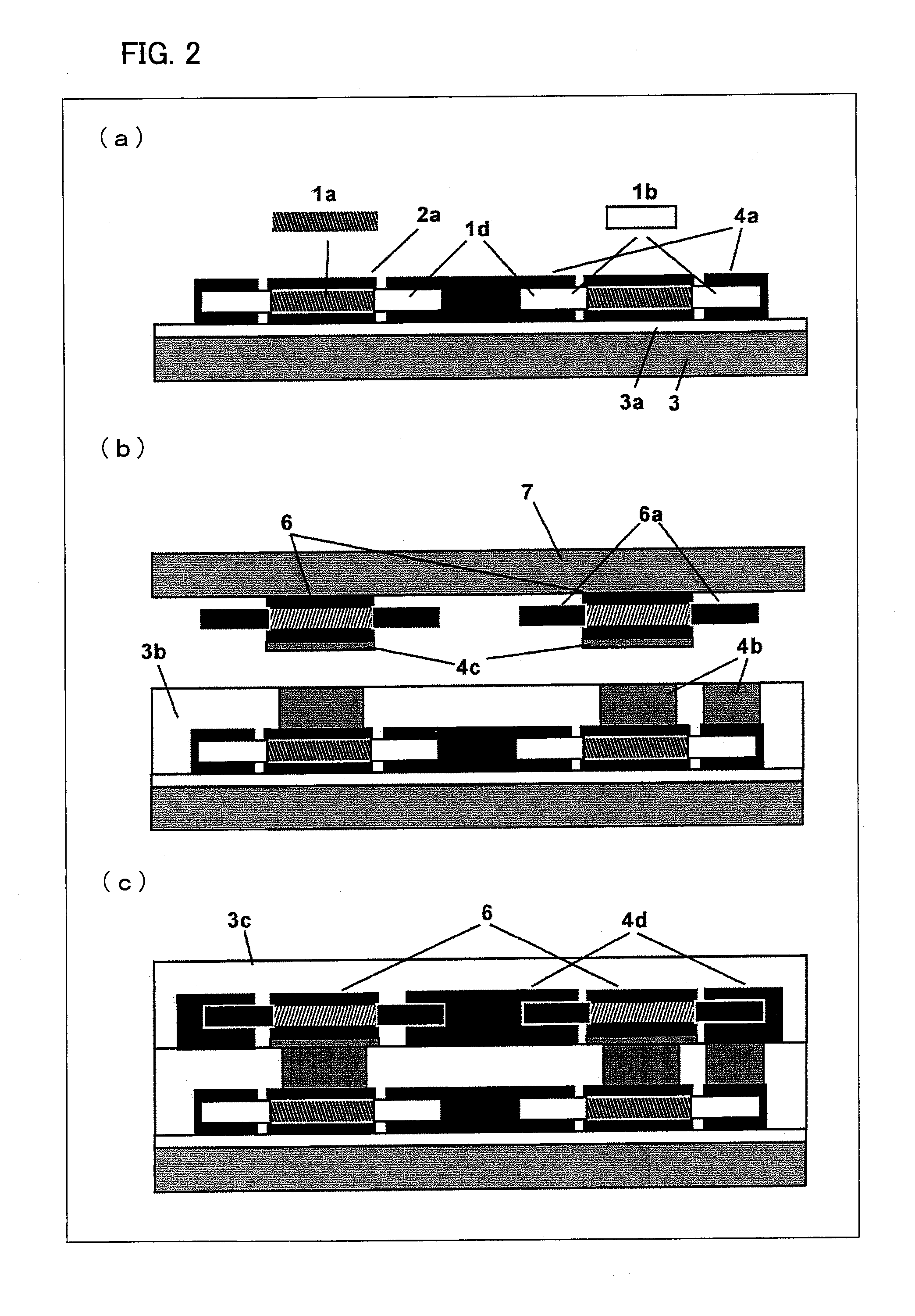Device interconnects
a technology of device interconnection and interconnection layer, which is applied in the direction of printed circuit non-printed electric components association, semiconductor/solid-state device details, chemistry apparatus and processes, etc., can solve the problems of low interlayer via density, high cost, and inability to find suitable techniques, etc., to achieve the effect of reducing capacitance and resistance of interlayer interconnects, high inter-layer interconnect density, and improving circuit speed
- Summary
- Abstract
- Description
- Claims
- Application Information
AI Technical Summary
Benefits of technology
Problems solved by technology
Method used
Image
Examples
Embodiment Construction
[0128]FIGS. 1(a) to 1(d) show the initial steps of a fabrication method in which a plurality of devices is fabricated on a substrate. In this particular example, the starting material consists of a plurality of parallel and edge aligned elongate low-dimensional structures 1 which are encapsulated in a matrix 2 and positioned on a substrate 3 so as to extend substantially parallel to the substrate, as shown in FIG. 1(a). In the example of FIG. 1(a) the elongate low-dimensional structures 1 do not have a uniform constitution along their length but contain regions 1a, 1b of different constitution from one another. For example, one or more of the following may differ between the regions 1a and the regions 1b: material composition, material composition profile, cross-section geometry, cross-sectional dimensions and orientation.
[0129]The substrate 3 may be formed of any suitable material and may, for example, be a transparent substrate, for example a glass substrate or a transparent plast...
PUM
| Property | Measurement | Unit |
|---|---|---|
| insulating | aaaaa | aaaaa |
| low-dimensional structures | aaaaa | aaaaa |
| symmetry | aaaaa | aaaaa |
Abstract
Description
Claims
Application Information
 Login to View More
Login to View More - R&D
- Intellectual Property
- Life Sciences
- Materials
- Tech Scout
- Unparalleled Data Quality
- Higher Quality Content
- 60% Fewer Hallucinations
Browse by: Latest US Patents, China's latest patents, Technical Efficacy Thesaurus, Application Domain, Technology Topic, Popular Technical Reports.
© 2025 PatSnap. All rights reserved.Legal|Privacy policy|Modern Slavery Act Transparency Statement|Sitemap|About US| Contact US: help@patsnap.com



